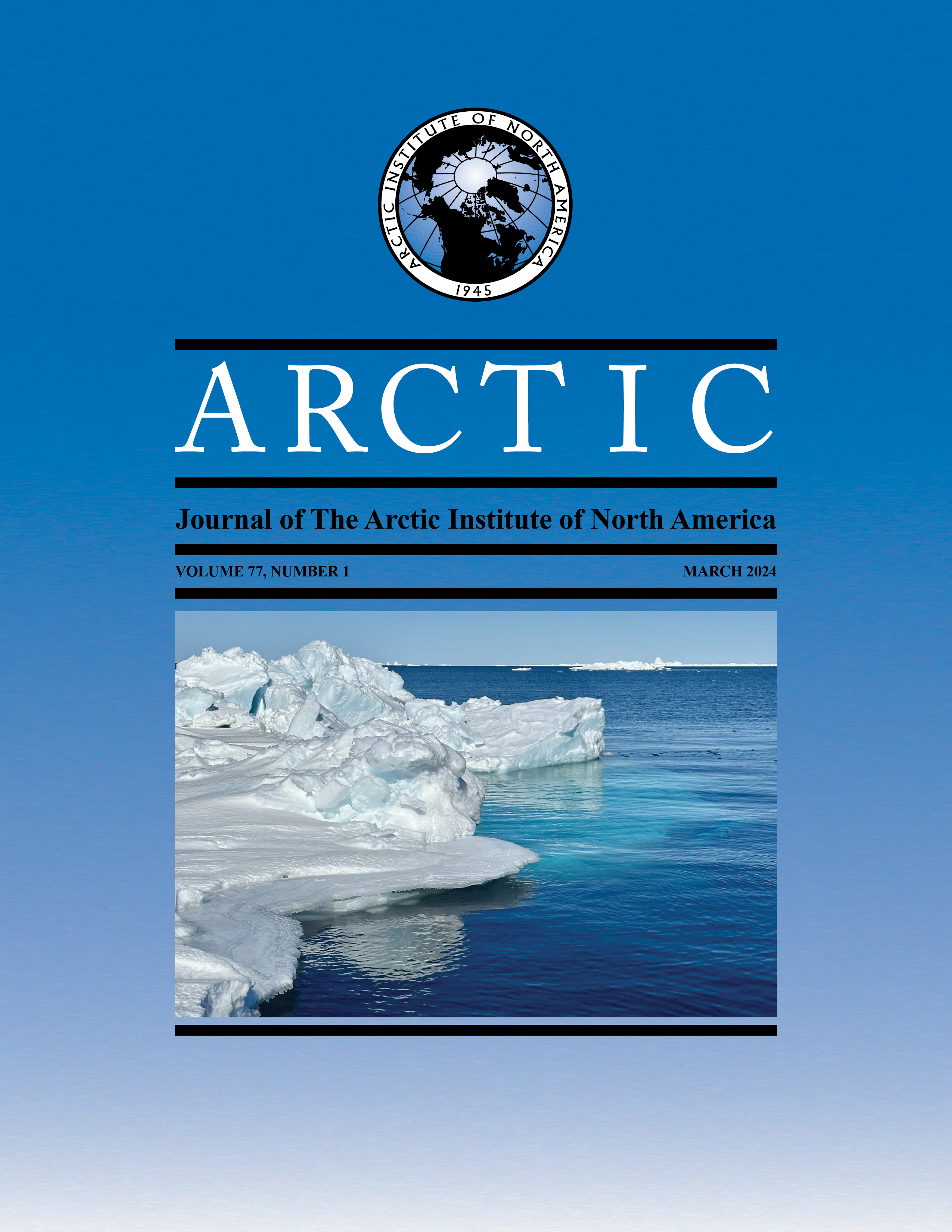Tall and Low Shrub-Adapted Passerines Respond Differently to Shrub Expansion in Arctic and Subarctic Alaska
DOI:
https://doi.org/10.14430/arctic79155Abstract
The expansion of deciduous shrubs is among the most conspicuous and widespread of the phenomena affecting tundra regions under a warming climate. While this process is expected to affect the distributions of terrestrial vertebrates, empirical assessments of responses to shrub expansion are rare, particularly for passerine birds. Here, I jointly investigate the topographic correlates of shrub expansion and differences in the density of shrub-adapted passerines between long- and recently established shrub cover at five sites in Arctic and Subarctic Alaska. I used a remotely sensed vegetation cover timeseries (1985 – 2020) and line transect data (2015 – 22) for four low and four tall shrub – adapted passerines. The line transect data were comprised of the individual encounter locations, which permitted fine-scale assessment of the effect of shrub cover age class (established pre- or post-1985) under a point process framework. Low shrub – adapted species showed weak differences in density between long- (pre-1985) and recently established (post-1985) shrub cover. In contrast, a subset of tall shrub – adapted species at two of the five study areas had lower density where the proportion of total shrub cover in the younger age class was relatively high. The contrasting responses of these two groups suggest that expanding shrub cover may have structural characteristics, such as shorter height and a more diffuse distribution, that are not preferred by tall shrub – adapted passerines. This suggests caution in assuming uniform responses to shrub expansion across species and spatial regions and indicates the potential importance of incorporating time lags into assessments of vertebrate responses to shrub expansion.
Downloads
Downloads
Published
Issue
Section
License
Copyright (c) 2024 ARCTIC

This work is licensed under a Creative Commons Attribution 4.0 International License.


